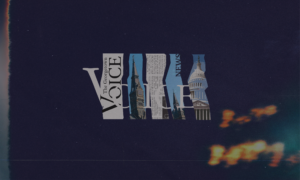The recent Georgetown University Student Association executive election brought a significant amount of attention to the issue of sexual assault policy, a problem faced by many campuses across the country. One way Georgetown has addressed this issue is through its Blue Light Alarm System, an initiative developed to increase students’ ability to reach first responders if they feel threatened or unsafe.
However, the reliability of the blue light system at Georgetown has been questionable in the past, and even today there is still a considerable disconnect between the Department of Public Safety, University Information Services, and University Facilities and Student Housing about the system.
When asked about the number and locations of the blue lights in Georgetown, DPS Chief Jay Gruber initially could not provide the Voice with such information. “I do not have this list [of blue light locations] handy,” Gruber said. “It is maintained by University Information Services and University Facilities and Student Housing.”
Even after getting into contact with members of UIS, Gruber did not have a list of blue light locations available. He provided an approximate number of how many blue lights there are on campus. “While we do not have a publicly available map of the blue lights, we have over 150 blue light phones across campus,” he said. However, the Health Education Services website states that there are only 34 blue light phones across campus and provides the location for each.
Gruber believes an expansion of the blue light system is unnecessary. “The current number is sufficient,” Gruber said. “This is especially true in light of cell phones, smartphones, and apps that are designed to supplant the use of blue light phones.” Gruber did not have any statistics on blue light phone usage, but said they are rarely used.
Georgetown is currently working on a mobile emergency smartphone app for Georgetown. Both Gruber and newly sworn in GUSA President Nate Tisa (SFS ‘13) confirmed the ongoing work on the app.
“UIS and DPS are working together to identify a mobile app solution that would enable students and members of our community to better access campus police and other first responders in an emergency from their smartphone,” Gruber said. Tisa also sees potential for a mobile app. “Sexual assault risk reduction and safety overall are a huge priority for us, and while blue lights are crucial they will never be able to reach everywhere incidences occur,” he said.
A significant problem with Georgetown’s blue light system is the lack of any in Burleith. “The blue lights require connectivity to the campus phone system,” Gruber said. “Connectivity to the campus does not exist in Burleith.”
Despite the fact that DPS seems to lack a comprehensive list of blue light locations, Gruber maintained that DPS officers are capable of responding to the exact location of any blue light emergency.
“We have a computer that supplies the location of the phone when we are called,” Gruber said. “We immediately dispatch officers to the location of the phone. This is done whether or not the person who activated the phone answers.”
According to Gruber, officers are trained exactly on how to do this. “Officers are well trained to respond to emergency calls for service and are told which phone was activated and they respond directly to that location,” he said.
Broken and malfunctioning blue lights are repaired by UFSH, according to Gruber, and testing of the blue lights is conducted regularly. “All emergency call boxes are polled daily by the system server,” he said. “Additionally, the facilities management electronics shop manually inspects blue light phones monthly … I do know that when there is a problem with a phone it is addressed by UFSH in a very prompt manner.”
Shavonnia Corbin-Johnson (SFS ’14), who finished third in the GUSA executive election, has joined Tisa’s administration as coordinator for group outreach and will be working on reforming sexual assault policy. Corbin-Johnson recounted one time when she tested a blue light phone.
“Being curious, I decided to try a blue light system and was planning on generating a great excuse and calling DPS right after the ‘emergency’ sounds went off,” Corbin-Johnson said. “Nothing happened. It didn’t work.”
It might take University Facilities and Student Housing longer to fix the blue lights than Gruber believes. “At any given time a number of [the lights] don’t work—last year I think a survey revealed up to a third were broken,” Tisa said. “We’re going to work with the University to get those repaired.”




